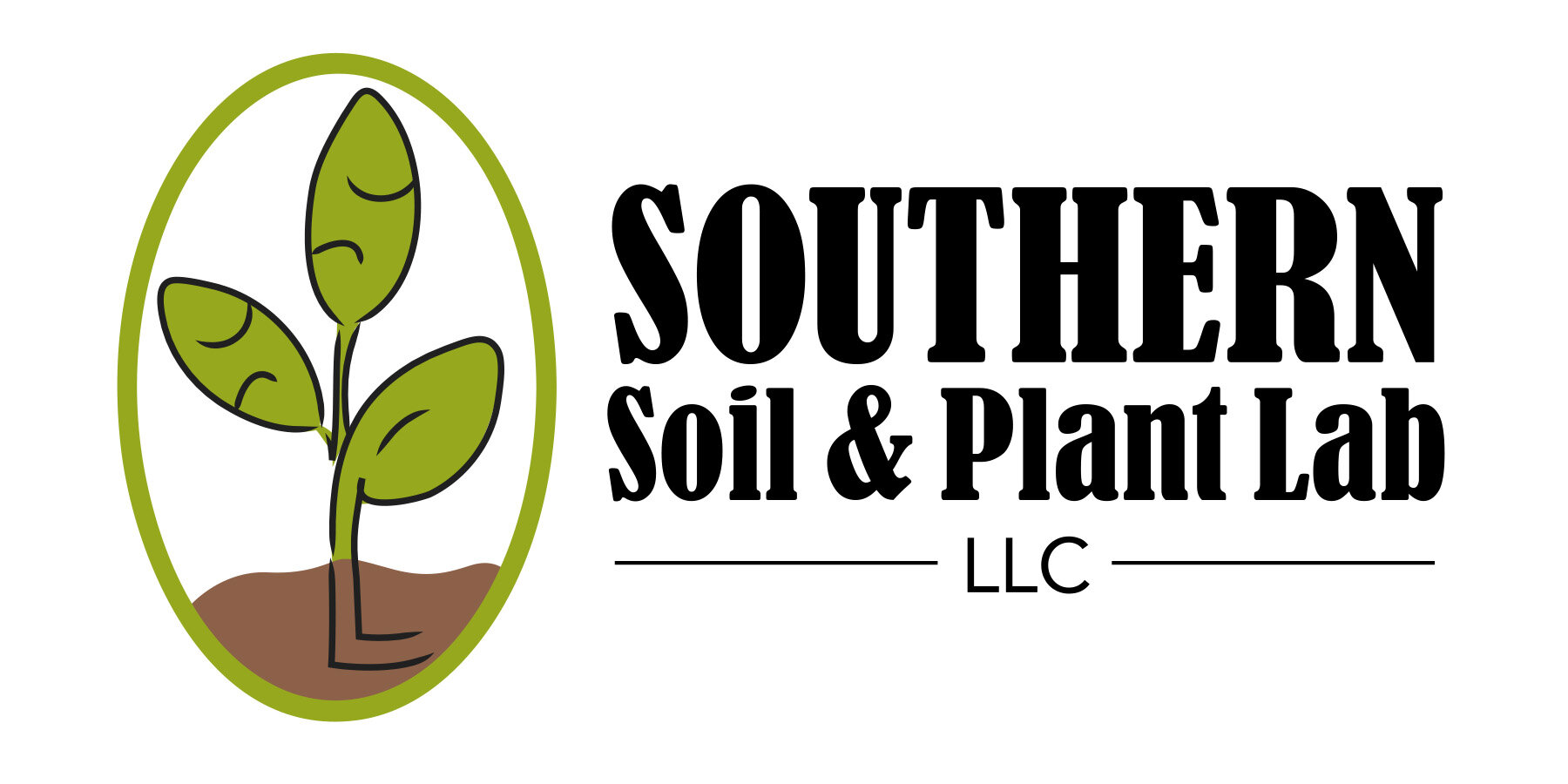
Our many years of experience analyzing soil and plant tissue allows us to offer these best practices regarding sample collection and preparation.
Proper Soil Sampling Procedures
Equipment Using proper equipment for sampling can make all the difference. A soil probe is the best tool for the extraction because it enables you to pull multiple cores at the proper depth with equal amounts of soil from each core. If a soil probe is not available, a spade or shovel will be sufficient.
Sampling Depth Soil samples should be taken in the top six inches of the soil. Each sample should consist of equal amounts of soil from the soil surface to the six-inch depth.
Technique A soil sample is most accurate when it is a composite of samples from the area you plan to apply the recommended fertilizer and lime. Each sample should consist of multiple cores from the given area or field. When using a hand probe, pull enough cores to reach the fill line on the soil sample bag (usually around six cores). For spades and shovels, it is best to dig a V-shaped hole, then dig a slice from the side of the hole and remove a one-inch-wide sliver for your core.
Sample Identification Label each bag with a sample ID that you will recognize on the report. It can be numbers or field names. Southern Soils will be happy to provide you with soil sample collection bags upon request.
Complete a Check-In sheet provided by Southern Soils and select the desired crop recommendation. You will receive results within one business day in most cases.
How and When to Pull Plant Tissue for Analysis
Corn
V4 15-20 entire above-ground portion of plant.
V5-V18 10-15 of the first collared-leaf from the whorl. Break off the entire leaf at its base. Do not include any portion of the leaf sheath.
VT 6-10 of the first collared leaf from the whorl. Break off the entire leaf at its base. Do not include any portion of the leaf sheath.
Between R1-R3 6-10 of the first leaf below the ear. Break off the entire leaf at its base. Do not include any portion of the leaf sheath.
Cotton
Pinhead Square 30 of first fully developed leaf from the terminal, usually 4th or 5th leaf down.
First Bloom 20 of first fully developed leaf from the terminal, usually 4th or 5th leaf down.
Full Bloom 20 of first fully developed leaf from the terminal, usually 4th or 5th leaf down.
Boll Fill 20 of first fully developed leaf from the terminal, usually 4th or 5th leaf down.
Soybeans
V3 to V5 25-30 of the uppermost fully open mature trifoliate. Remove petioles and stems.
Twice between R1and R4 20 of the uppermost fully open mature trifoliate. Remove petioles and stems.
Rice
Seedling 20-25 entire above-ground portion of plant.
Tillering 20-25 entire above-ground portion of plant.
Flowering/Heading 25-30 flag leaves.
Wheat
Feekes Stages 1-9 30-40 entire above-ground portion of plant.
Feekes Stage 10 30-40 flag leaves or uppermost mature leaf.
Grain Sorghum
Boot Stage 10-15 mature leaves from new growth.
Grain Fill 6-10 mature leaves from new growth.
Tissue Sample Storage and Submission
Tissue samples should be collected in paper bags. Avoid using ziploc bags because moisture buildup can cause mold and mildew to grow on samples. Southern Soils is happy to provide sample bags to you upon request. Label each bag with a sample ID that you will recognize on the report, along with the crop and growth stage.
For the most accurate results, submit your tissue samples to the lab as soon after sampling as possible. If you are unable to get the samples to the lab that day, it is best to store them in the refrigerator until they can be submitted. Samples can also be sent via overnight mail. Be sure to include a Tissue Sample Check-in Sheet when mailing samples.
